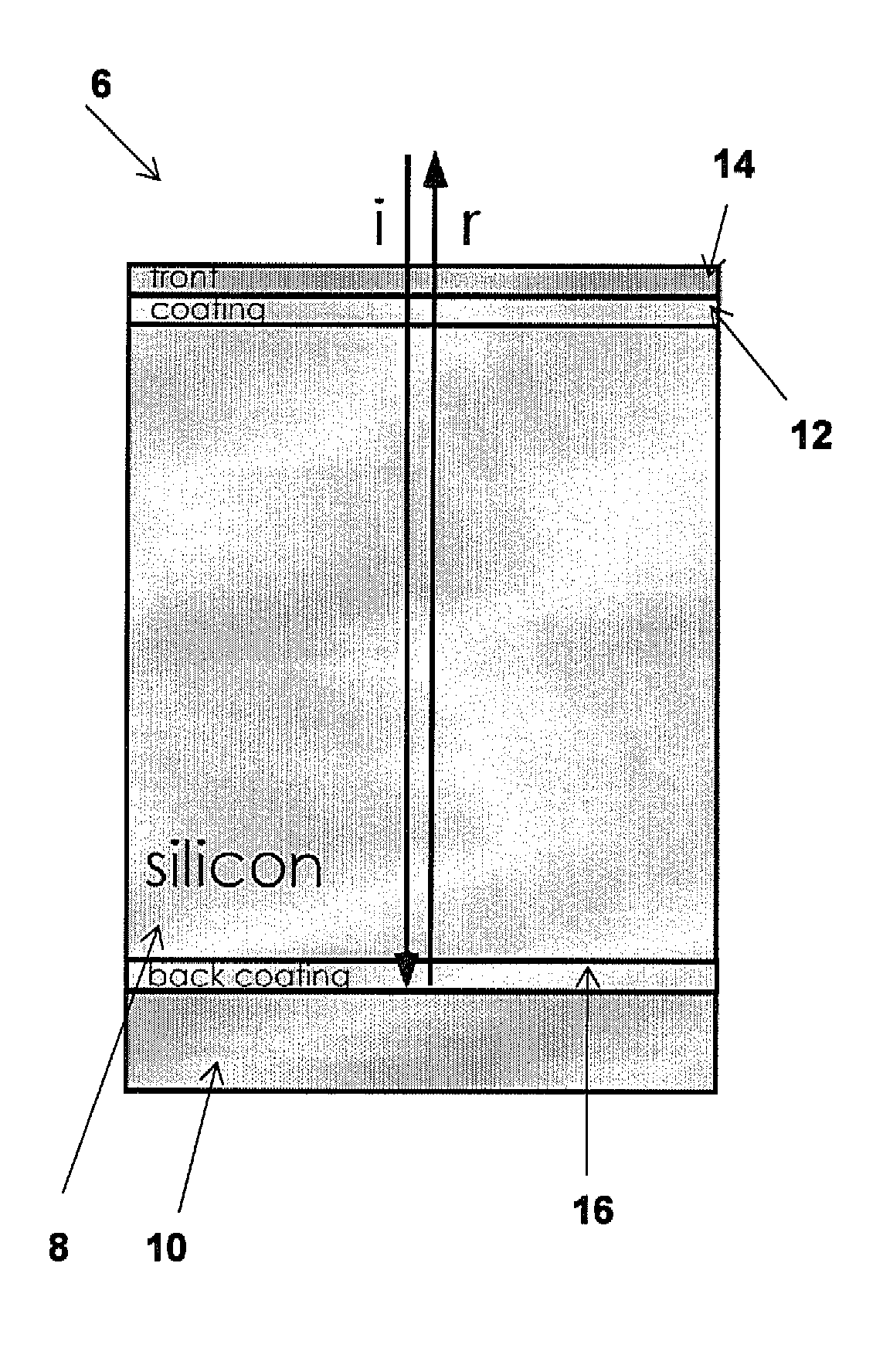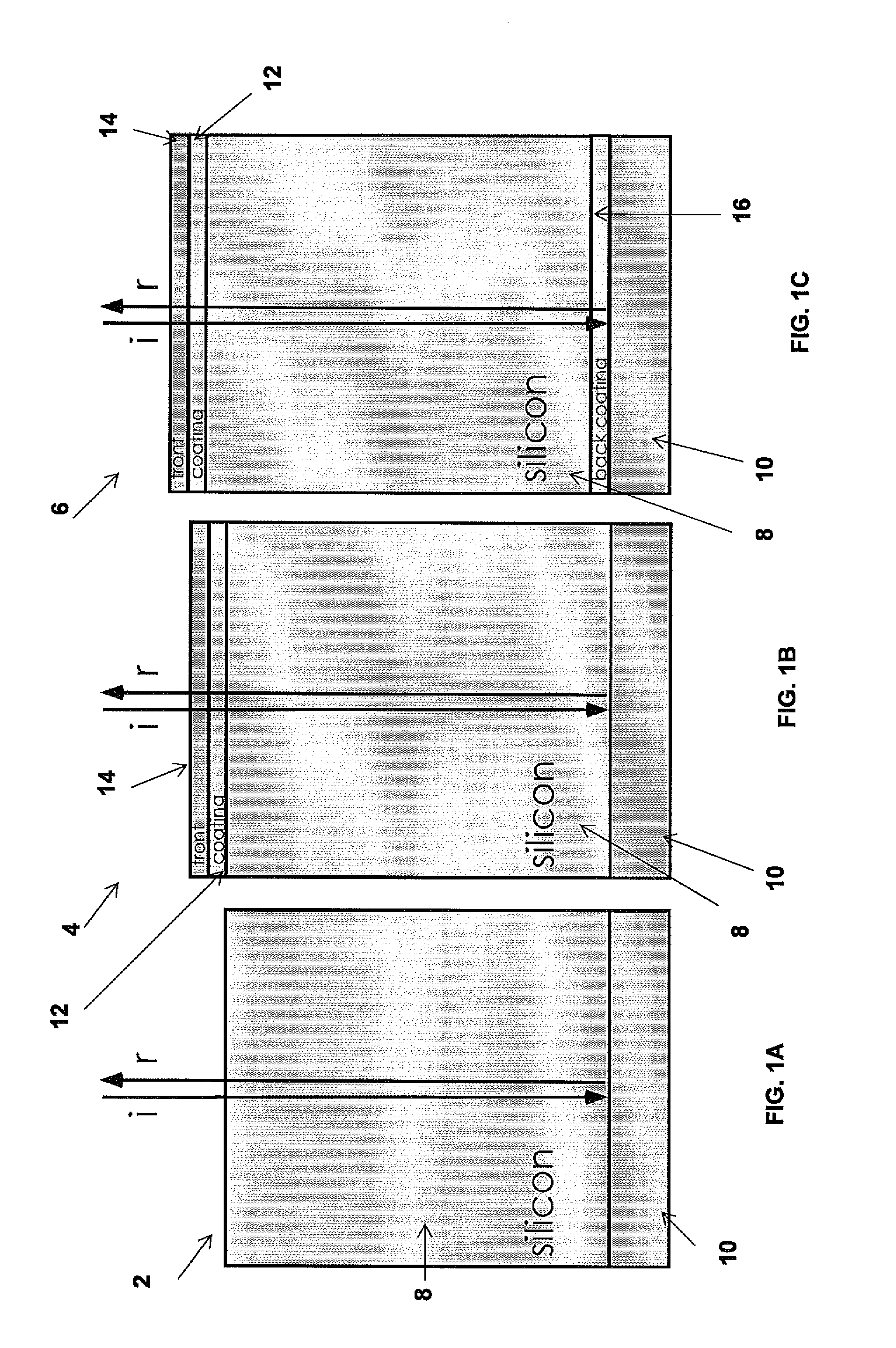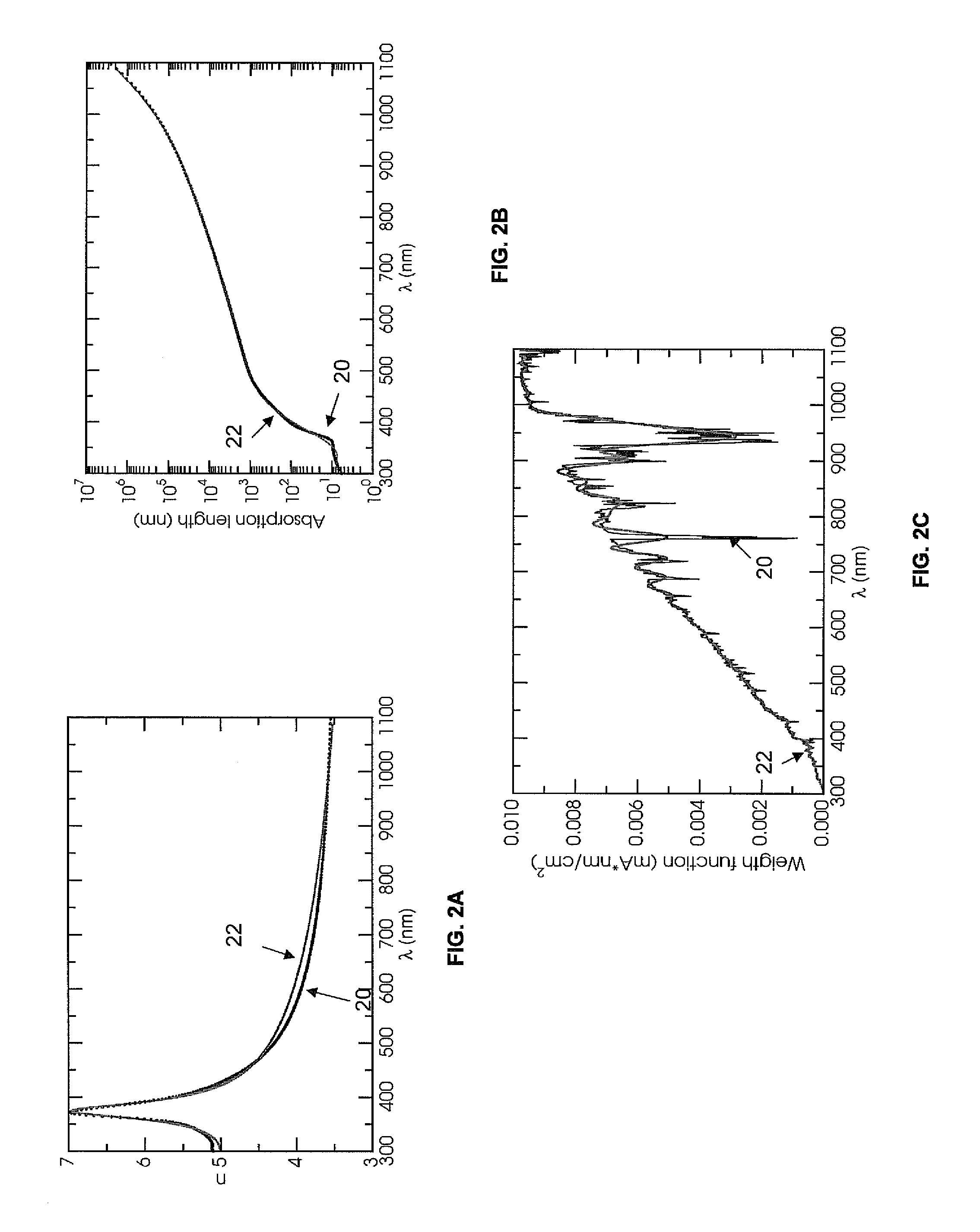Global optimization of thin film photovoltaic cell front coatings
a technology of photovoltaic cells and front coatings, applied in the field of solar cells, can solve the problems of only being able to solve approximate problems, the emerging thin-film solar cell technology presents an entirely different challenge for front coating design, and the full range of possible designs had not been explored. achieve the effect of maximizing the admittance over the selected bandwidth, and maximizing the short-circuit current of the solar cell
- Summary
- Abstract
- Description
- Claims
- Application Information
AI Technical Summary
Benefits of technology
Problems solved by technology
Method used
Image
Examples
Embodiment Construction
[0018]The invention provides a front-coating (FC) of a solar cell that controls its efficiency, determining admission of light into the absorbing material and potentially trapping light to enhance thin absorbers. Single-layer FC designs are well known, especially for thick absorbers where their only purpose is to reduce reflections. Multilayer FCs could improve performance, but require global optimization to design. For narrow bandwidths, one can always achieve nearly 100% absorption. For the entire solar bandwidth, however, a second FC layer improves performance by 6.1% for 256 μm wafer-based cells, or by 3.6% for 2 μm thin-film cells, while additional layers yield rapidly diminishing returns.
[0019]Emerging thin-film solar cell technology presents an entirely different challenge for front coating design. First of all, reflections from the front and back interfere over a broad range of wavelengths. Furthermore, unlike a narrow bandwidth problem, where the principles of Q-matching re...
PUM
 Login to View More
Login to View More Abstract
Description
Claims
Application Information
 Login to View More
Login to View More - R&D
- Intellectual Property
- Life Sciences
- Materials
- Tech Scout
- Unparalleled Data Quality
- Higher Quality Content
- 60% Fewer Hallucinations
Browse by: Latest US Patents, China's latest patents, Technical Efficacy Thesaurus, Application Domain, Technology Topic, Popular Technical Reports.
© 2025 PatSnap. All rights reserved.Legal|Privacy policy|Modern Slavery Act Transparency Statement|Sitemap|About US| Contact US: help@patsnap.com



